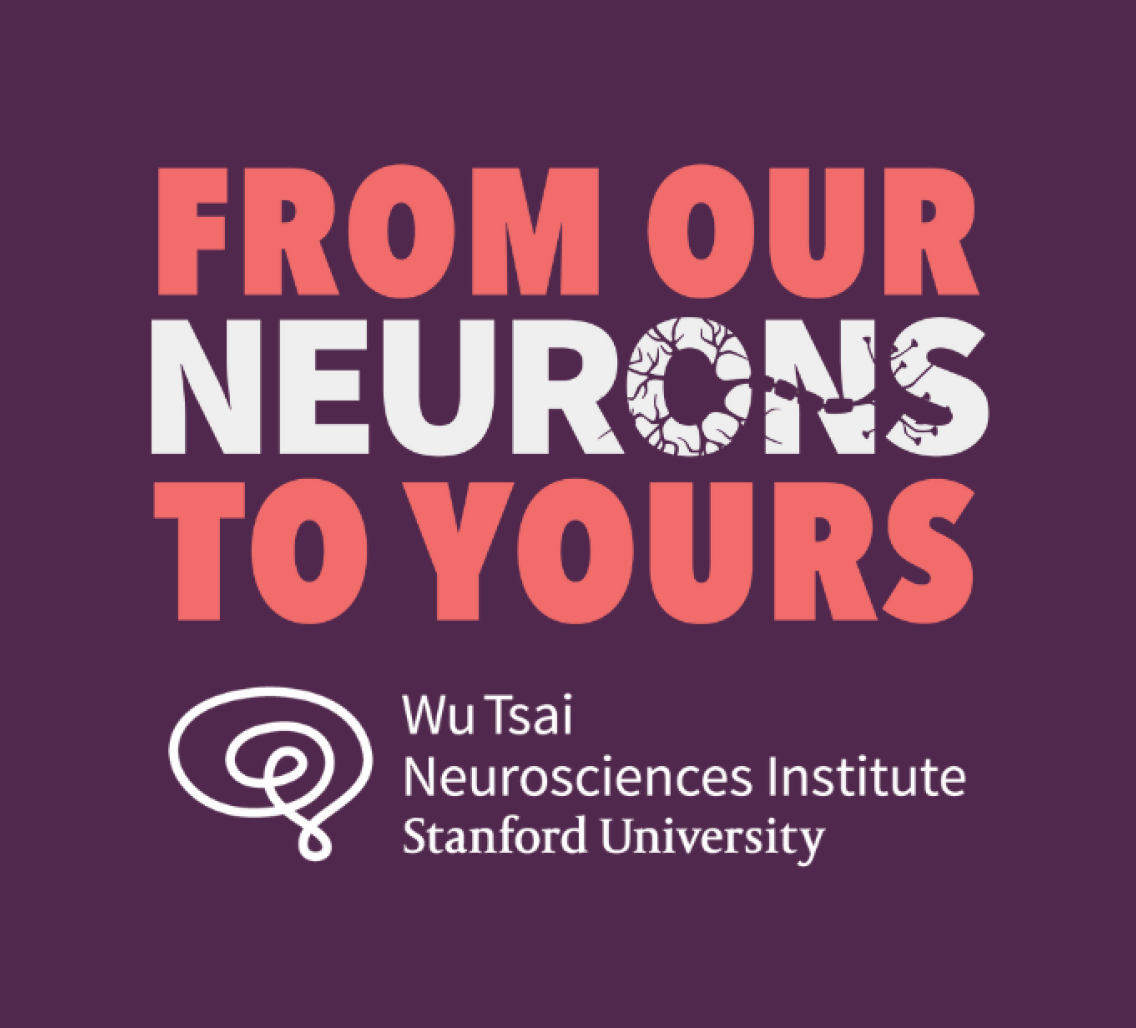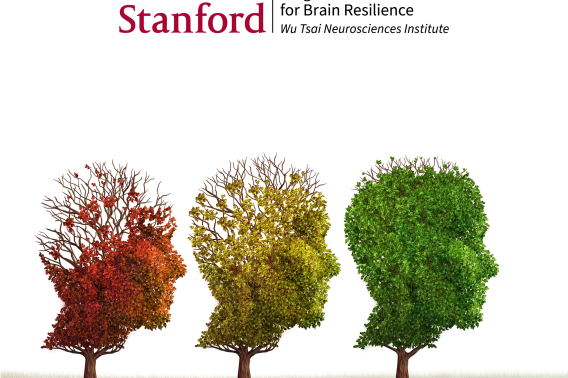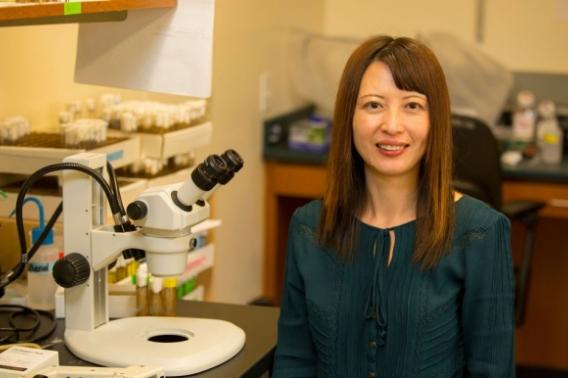Redefining Parkinson's Disease

Parkinson's disease is one of the most common neurodegenerative disorders — right after Alzheimer's disease.
It's familiar to many as a movement disorder: people with the disease develop difficulties with voluntary control of their bodies. But the real story is much more complicated.
This week, we speak with Kathleen Poston, a Stanford neurologist who is at the forefront of efforts to redefine Parkinson's disease and related disorders based on their underlying biology — not just their symptoms. As Poston says: "The biology is the disease."
Join us to learn about exciting advances in our ability to detect the brain pathology driving these disorders much earlier, even before symptoms arise, and how this is opening doors for early intervention and — hopefully — prevention.
SUBSCRIBE on Apple Podcasts, Spotify, Amazon Music and more.
Learn more
Further reading
- Understanding Parkinson's Disease: Stanford's Dr. Kathleen Poston on latest advances (CBS News Bay Area - Video)
- A biological definition of neuronal α-synuclein disease: towards an integrated staging system for research (The Lancet - Neurology, 2024)
- International Working Group Proposes New Framework for Defining Parkinson Disease Based on Biology, Not Symptoms (Neurology Live article)
Episode credits
This episode was produced by Michael Osborne at 14th Street Studios, with production assistance by Morgan Honaker. Our logo is by Aimee Garza. The show is hosted by Nicholas Weiler at Stanford's Wu Tsai Neurosciences Institute and the Knight Initiative for Brain Resilience.
If you're enjoying our show, please take a moment to give us a review on your podcast app of choice and share this episode with your friends. That's how we grow as a show and bring the stories of the frontiers of neuroscience to a wider audience.
Episode Transcript
Nicholas Weiler:
This is From Our Neurons To Yours, a podcast from the Wu Tsai Neurosciences Institute at Stanford University. Each week on this show, we bring you to the frontiers of brain science to meet the scientists who are unlocking the mysteries of the mind and building the tools that will let us communicate better with our brains.
Today, a new understanding of Parkinson's.
We've done a few episodes recently where dopamine has come up, and one of the things that often arises in that conversation is Parkinson's disease, which affects the dopamine system. Parkinson's is actually one of the most common neurodegenerative disorders right after Alzheimer's disease.
Historically, we've diagnosed Parkinson's mainly based on symptoms, but advances in our ability to detect the pathology in the brains of living patients, even before symptoms arise, is making scientists rethink their whole approach to the disorder, including its definition. It turns out this is emblematic of broader trends in neurology summed up by the phrase, "The biology is the disease."
This week, we speak with one of the foremost experts leading the charge in redefining how we think about Parkinson's. Today's guest, Dr. Kathleen Poston.
Kathleen Poston:
I am a professor of neurology here at Stanford University. I'm a clinician-researcher, so I see patients who have Parkinson's disease, dementia with Lewy bodies, and other movement disorders one day a week in clinic. And then, I run a research lab that focuses on biomarkers and better ways to objectively diagnose, measure, and track progression of disease within movement disorders.
Nicholas Weiler:
Fantastic. Earlier this year, you were part of a group that proposed redefining Parkinson's disease based on our growing understanding of its biology. But before we talk about that in more depth, I wanted to take a step back and just learn a little bit more about what Parkinson's is and how we've thought about it up until this point. Could you tell us how Parkinson's has been classically defined? What is Parkinson's disease?
Kathleen Poston:
So Parkinson's disease was first described well over 200 years ago when James Parkinson wrote this essay of the Shaking Palsy, where he described a handful of people who had very similar symptoms, some of which he saw in his clinic and some of which he actually just observed walking around the streets of London.
Since that time, the disease has been defined by a classic set of clinical symptoms that patients experience in signs that the doctor finds on exam. And those entail slowness of movement, which we call bradykinesia, where people reduce in amplitude and speed as they do repetitive actions like walking or tapping.
Nicholas Weiler:
So gets slower and slower.
Kathleen Poston:
Slower and slower, exactly. But it's not from fatigue or weakness. It's just the motor pattern isn't able to sustain itself as it does repetitive movement. It's also defined by stiffness in the muscles, which we call rigidity. And then there's a classic tremor that is often associated with Parkinson's, but actually about 50% of people with Parkinson's disease have this tremor. But it is very classic for Parkinson's disease, where it's when the arms or legs are in the resting position, and it has a rotational pill-rolling quality to it. So those are the symptoms that we look for on exam that essentially define making the diagnosis of Parkinson's disease.
Nicholas Weiler:
And when you say pill-rolling, that's like a specific movement. What I'm thinking of is rubbing your first finger and your thumb together. Is that the movement that you're describing?
Kathleen Poston:
That's exactly it. And that's to differentiate it from a flexion-extension type of tremor, which is more of a wing-beating type of tremor, which we see in other things.
Nicholas Weiler:
I see.
Kathleen Poston:
And so it has a special quality to it that's rotational with that exactly the thumb and index finger, almost like rolling a pill between those two fingers.
Nicholas Weiler:
Got it. And how common is Parkinson's?
Kathleen Poston:
It's actually the second most common neurodegenerative disease of aging. So the most common is Alzheimer's disease. As people get older, the frequency becomes higher and higher. There are about one and a half to 2 million Americans with Parkinson's or Lewy body disease more broadly.
Nicholas Weiler:
Wow. One thing that I was surprised to discover about Parkinson's is I've always thought of it as this classic movement disorder, but there are also cognitive symptoms too.
Kathleen Poston:
That's right. In fact, that was a misunderstanding about Parkinson's disease for many years, that it was just a movement disorder. And it was really when we had some medications that could start to help alleviate some of the symptoms that were movement-related that we realized, "Oh my gosh, there's a lot more to this."
There's this whole group of non-motor symptoms, cognitive memory, thinking, and in fact, there's a very high risk of people with Parkinson's disease developing dementia, but also other non-motor symptoms like fatigue, blood pressure fluctuations, sleep dysfunction, difficulty swallowing, lots of things that are outside of that classic triad that I first described.
Nicholas Weiler:
When do people usually start experiencing these symptoms? When does the disorder become noticeable, and what are some of the things that people go through as this disorder starts to affect them?
Kathleen Poston:
So most people don't get diagnosed until they have that classic triad of motor symptoms. But it turns out if you ask patients, they will say, "You know what? Five years ago, I started experiencing fatigue, and I thought it was just my job getting to me, but actually I'm thinking now maybe this might've been the first part of this disease. Or 10 years ago, I lost my sense of smell, and I thought that was weird. Or 15 years ago, I started having sleeping trouble." All of those types of non-motor symptoms.
The sleep difficulty, the smell loss, constipation, fatigue, all of those are actually non-motor symptoms that can occur before the first motor symptoms. But they're so nonspecific that they usually just get attributed to other things as people get older. And it's not until we make the diagnosis of Parkinson's disease, we recognize that all of those non-motor symptoms actually were probably manifestations of the disease prior to when we could clinically make the diagnosis.
Nicholas Weiler:
So we really need ways of trying to identify the disease, earlier it sounds like. Is that one of the things that drew you into this field? I know your... in addition to your work in the clinic, your lab is very focused on trying to understand early biomarkers.
Kathleen Poston:
That's right because by the time somebody has the slowness, stiffness, and tremor, we actually have learned that they've already lost 50 to 70% of the neurons in the brain that control movement. So a lot of damage has already been done by the time I say someone has, quote, early or newly diagnosed Parkinson's disease.
If we're going to make a big impact on changing the trajectory of someone's experience with Parkinson's disease, the earlier we can intervene to stop those neurons from dying, the better the person will be in the long run. So trying to find a way to get to that early stage has been a big focus of my research because, in clinic, I know that what I'm calling newly diagnosed is actually pretty far along the disease process. It was just unrevealed to the patient and to the doctors.
Nicholas Weiler:
I think that's a good place to start talking about this new definition that you and your colleagues have developed. Can you tell us how you got to this place of thinking, "We might need just to redefine the disease itself."
Kathleen Poston:
That's right. It is part of a bigger picture. And one of the challenges with this clinical exam, both being the way that we diagnose patients as well as how we look at their response to medications in clinical trials and in clinical practice, is that it has a lot of variables we can't control. If someone has a good night's sleep, they might perform much better in clinic. If they had a terrible night's sleep, their tremor might be a lot worse.
Nicholas Weiler:
Right.
Kathleen Poston:
If they had an argument with their spouse about what time they should leave that morning, they might have worse walking that day. There's so many things that are outside of our control that influence patient's symptoms because the brain is connected to the body, and emotions are part of our brain's experience. And so all of those things interplay. So this physical exam has limitations in its ability to very specifically say, "This is what's happening in someone's brain right now." I have always wanted to get beyond that and really get into what's happening in the brain, whether it's through brain imaging or with biological ways of quantifying different things.
So that's where my interest come from. And that realization that for the field to have more impactful clinical trials that didn't just develop drugs that helped symptoms but actually changed the course of the disease, slowed the course of the disease, delayed the progression of the disease, we needed something that was more objective. And that is what motivated the Michael J. Fox Foundation about 20 years ago to start to put together the Parkinson's Progression Marker Initiative or PPMI, which is the largest initiative that's happened to try to collect data that would allow us to find something that was more biologically grounded than the clinical exam.
And it's very similar to work that individual research labs have done as well. Individual labs like mine and others have really tried to go deep in identifying specific things that might be good candidates for these objective biomarkers. And the PPMI study has collected all of this data on a bunch of patients over the last 10 years so that when we find something that might be a good choice, it can be validated in this well-described, international, multi-site cohort, which is very similar to what a cohort of a phase three clinical trial would be.
Nicholas Weiler:
So as we've developed more data about biomarkers about the biology of the disease, what have we learned that was perhaps surprising and led to this idea of redefining Parkinson's and combining it with other diseases that are actually related at a molecular level?
Kathleen Poston:
That's right. I've been talking about Parkinson's disease, but it turns out when somebody dies and donates their brain to research, there's certain findings in the brain that we see in Parkinson's disease that are disease-defining. That's really the only ultimate way that I can make the diagnosis of Parkinson's disease as a definite diagnosis.
Nicholas Weiler:
Because other things going on in the brain could result in similar symptoms.
Kathleen Poston:
That's right. We refer to them loosely as Parkinson's plus syndromes or atypical Parkinsonian syndromes, which essentially are other diseases that mimic Parkinson's disease. And some of them are very close to mimicking to the point that even in an expert clinical researcher and clinician like myself, I will be wrong one to 2% of the time in the diagnosis. And I have a couple of people that I have followed clinically over the years that, at autopsy, they did not have Parkinson's disease. They had one of these atypical syndromes that looked very similar to Parkinson's disease. So we're wrong sometimes, even in the best of cases.
In addition, there are other things that clinically look a little different than what I just described as Parkinson's disease. Things that are more on the cognitive, more on the dementia, more on the non-motor side with very little movement that in autopsy are identical to what we see in Parkinson's disease. We refer to all these collectively as Lewy body diseases, and that's because the entity that we see at autopsy is called a Lewy body, which is an inclusion in neurons, particularly in the substantia nigra in the brain, but also can see throughout the cortex in other areas of the brain. And it is the signature pathology that defines both Parkinson's disease as well as these other Lewy body diseases such as dementia with Lewy bodies.
Nicholas Weiler:
I don't want to get too deep into the weeds on this, but I'd love to know a little bit about what we know about these Lewy bodies. Are they like an Alzheimer's disease? You get these clumps of protein that are gunking up the brain.
Kathleen Poston:
That's basically what we see. It's a clump of protein. In 1998, it was first recognized that the protein that makes up the Lewy bodies is alpha-synuclein. And alpha-synuclein is a really important protein in the brain. It does a lot of great things, but for some reason, it will clump together and form these Lewy bodies.
Nicholas Weiler:
Inside neurons.
Kathleen Poston:
Inside the neurons. That's right inside the neurons. We don't know if the Lewy body is the cause of neuronal death or if the Lewy body is maybe something that is trying to protect the neuron from something else happening, and then it just fails, and the neuron dies.
But we know there's a relationship between the areas in the brain where there are a lot of Lewy bodies and the areas of the brain where there's a lot of neuronal death. When you have the clumped alpha-synuclein in the form of Lewy bodies, that is Parkinson's disease and dementia with Lewy bodies.
Nicholas Weiler:
And so, is that the basis for this redefinition that you and colleagues have proposed?
Kathleen Poston:
That's right. Up until now, we couldn't identify somebody who had that Lewy body disease until they died. And the big breakthrough was the ability to finally identify people who have that while they're still alive. So this alpha-synuclein, everybody has it. And in the traditional way that we would measure proteins or alpha-synuclein from either blood or cerebral spinal fluid, it really wasn't that different in people who don't have Parkinson's disease versus people who did have Parkinson's disease.
So a new technique or assay to not just say, "Oh, there is alpha-synuclein there," but rather that's ability to identify alpha-synuclein that is clumping together. So it's aggregating, and so it's a yes no readout. It's either aggregating, or it's not aggregating. But it turns out that is incredibly accurate to what we're finding at the final autopsy. 98 to 99%-
Nicholas Weiler:
Wow.
Kathleen Poston:
... concordance so far between what we see in the cerebral spinal fluid and what we see at autopsy. So this is a protein-specific marker that we can now find in living people that almost 100% reflects what we previously could only see at autopsy.
Nicholas Weiler:
That's incredible. So my understanding is that the redefinition that you're doing is saying, "Look, let's not talk about Parkinson's and dementia with Lewy bodies anymore."
Kathleen Poston:
Yeah.
Nicholas Weiler:
"Let's just say these people have clumping alpha-synuclein in their brain. That's the biology." Is that the basic idea? Let's not worry as much about the symptoms. Let's worry about what's going on in the brain.
Kathleen Poston:
That's exactly what we're starting, and it really is a first step. We're not going to be able to do this test in every person for variety of reasons right now. It requires cerebral spinal fluid and a lumbar puncture, which is an invasive test. It's an expensive test to have done, but as a first step, we wanted to put out there and say, "Hey, we have something that we believe can identify people who have this clumping alpha-synuclein today. Let's put a framework around what it would be to biologically define this.
And then as the assay gets better, as it becomes more universally available, hopefully, one day it'll be in blood and not in cerebral spinal fluid, then we'll be prepared to be able to biologically define everyone. But let's just start right now with the framework of what that would look like." So that was the idea. So we're living in a bit of a duality world right now where somebody is doing a research study who has given alpha-synuclein for research purposes. We can say this person has what we're calling neuronal-synuclein disease that clumping alpha-synuclein in the CSF. And so we can biologically define them. But my patients in clinic who I don't have CSF on, I can still call them Parkinson's disease based on their slowness, stiffness, and tremor.
So we're living in a bit of a duality world. But the purpose is so that we can at least create the framework, try it out, and also start using it in clinical trials where you do want to make sure you're as biologically precise as possible in trying something new, particularly if it's an intervention that's targeting alpha-synuclein, you want to make sure the people in the study actually have clumping alpha-synuclein. So while it is a framework, it is something that actually is actionable today in the context of a clinical trial.
Nicholas Weiler:
Amazing. Yeah. So you don't have to worry about whether you've got a mix of people in the trial who have Parkinson's, and then when you look at the autopsy, you say, "Oh, actually, they had this other thing that just looks like Parkinson's." They have this neural-synuclein disorder.
Kathleen Poston:
And more importantly, you can, for the first time ever, enroll somebody in a clinical trial targeting synuclein who maybe doesn't even have the slowness, stiffness, and tremor yet. Maybe all they have is the smell loss or the sleep problems, but their synuclein test is positive. So that's when we can finally imagine what it would be like to develop a clinical trial to prevent someone from ever developing the slowness, stiffness, tremor, cognitive disorder. We can conceptualize now an actual primary prevention trial.
Nicholas Weiler:
That's incredible. And that was a question that I had earlier actually, which is, do we know that this synuclein clumping is happening very early on in the disorder?
Kathleen Poston:
We have some early data that says. So we have data both from my lab here as well as other labs. The PPMI study. It's not the same number of patients that we have who have Parkinson's disease. It's more in the range of 100 to 200 people in that early phase, but in fact, it looks very promising.
What we don't know is the timeframe between someone, let's say, who just has loss of smell or the sleep disorder and they're synuclein positive. How long would it take for them to develop the slowness, stiffness, and tremor? One year, five years, 15 years? We don't know that yet. And because it's a yes-no answer, the test itself is not informative in saying the timeframe. So that's what we still need to really figure out, and that's what the observational clinical trials are trying to do right now.
Nicholas Weiler:
Interesting. Is this something that the field has gotten behind, or are there still people who sort of question this idea of redefining the disorder?
Kathleen Poston:
I think change is going to take a long time. First of all, for people to see all of the data, I've benefited from being on the Executive Steering Committee for the PMI study. I'm seeing data every single week that's coming out with these people who have just smell loss or REM sleep behavior disorder and seeing what their data looks like. We need to get our papers out very quickly so the entire field can have access to the data because they're scientists.
They want to see the data, and that's the right thing to do. It also needs validated in multiple cohorts. The PPMI study is great, but again, let's be scientific about this. Let's make sure that what we're seeing is still true in people from other ethnic backgrounds from other countries. So I think people are behaving like scientists. They want the data, and I think that's the right thing.
Nicholas Weiler:
It sounds like we're hopefully at the beginning of a really exciting time in the world of Parkinson's research, where you could start to get a biological handle on this. You can start to develop drugs that are specifically targeted to the actual thing that's going on in the person's brain, and you can, hopefully, start to enroll people as early as possible, as you say, to start considering trials for drugs that might even prevent the onset of the disorder rather than just slowing it down, which is what we've been aiming for with neurodegenerative disorders without too much success. Do you see this as reflective of a larger trend in neurology or at least in neurodegenerative disorders? Is this something that we're going to be able to do with other conditions like Alzheimer's or other disorders in the same camp?
Kathleen Poston:
I really hope so, and there's a lot of effort that's going on in those other disorders. The Alzheimer's disease field has actually been working on a biological definition for longer than the Parkinson's disease field has. We learned a lot from what they did, and we actually got a lot of input from some of the key leaders in that area to give us advice on how to think about this, how to make sure we talk to multiple stakeholders at the very beginning, get the patient's input from the very beginning. That was a big piece of advice that they gave us.
In addition, the Huntington's disease field is another one that's been working on a biological definition. There, they have a gene which defines the disease. But still, that time period from when somebody starts to develop the biological changes of Huntington's disease before they develop the clinical symptoms similarly has a cadence to it that needs a biological definition. And then there are some other neurodegenerative diseases. Some of the ataxias that have also been working on this. They're a little bit earlier in their stage.
And so there's a lot of different areas because I think we've really recognized that to truly actualize that vision of disease-modifying therapy for the people who already have a clinical diagnosis, and even more so a preventative therapy for people who are at very high risk or have biological changes but no symptoms yet, that we need to have this kind of framework in order to be successful in those clinical trials. And that's what we all want at the end. We want a slow disease progression for those who have it, and we want to prevent it for those who are at risk.
Nicholas Weiler:
I think that this will probably be the final question, just because we're running short on time. I could talk about this all day. I wonder how this reflects for you how far neuroscience has come in the past 10 or 20 years. It seems like there are a lot of areas where things that have been really hard or seemingly impossible are now at least seeming possible.
Kathleen Poston:
Yeah, I think that's a great insight to have because there are certain really mechanistic discoveries that had to happen in order for us to get here. The very first journal club I gave as a first-year medical student in 1998, which is why I know the year it came out, was when they discovered that alpha-synuclein was what made up a Lewy body. And that seemed like, wow. We had been observing Lewy bodies under the microscope since the early 1900s when Dr. Lewy first observed them in the brains of people who had died of Parkinson's disease. So for almost a hundred years, we had been observing something, and then, in the lab, people identified that protein.
And here we are just a little over 20 years later, and we can identify that in living people. But it had to come from those really fundamental discoveries that were happening in the lab in order for us to get to where we are today. And that's what it really says to me about where the neuroscience field is, this combination of mechanistic discoveries and then translating that into how we can understand the living human who's experiencing that disease. And that's what I'm so excited about because that whole process has to happen for us to prevent disease, and we're watching it happen in our lifetime. That's super cool.
Nicholas Weiler:
It's incredibly exciting. There's hope for all of us yet. Dr. Kathleen Poston, thank you so much for coming on our show.
Kathleen Poston:
Thank you for having me. This has been very fun.
Nicholas Weiler:
Thanks so much again to our guest, Dr. Kathleen Poston. To learn more about her work, check out the links in the show notes.
This episode was supported by the Knight Initiative for Brain Resilience here at the Wu Tsai Neurosciences Institute at Stanford University.
If you're enjoying the show, please subscribe and share with your friends. It helps us grow as a show and bring more listeners to the frontiers of neuroscience.
We'd also love to hear from you. Leave us comments or give us a shout-out on social media. We're @StanfordBrain and @BrainResilience.
From Our Neurons To Yours is produced by Michael Osborne at 14th Street Studios, with production assistance from Morgan Honaker. Our logo is by Aimee Garza. I'm Nicholas Weiler at Stanford's Wu Tsai Neurosciences Institute. See you next time.



